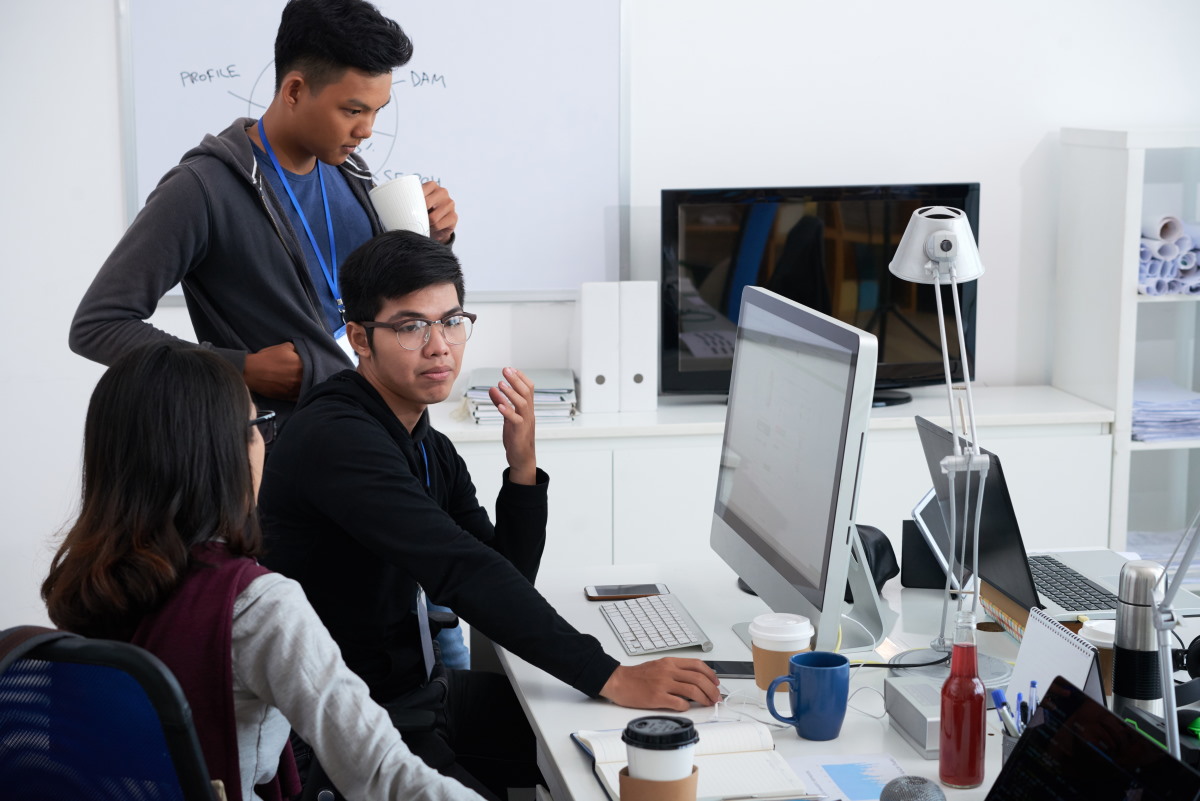Januscon 10 (2024): A Recap of Innovations and Highlights
For us, WebRTC professionals, Naples is not just about Pizza, Volcanoes and Football but also about a very specific conference centred around the open-source SFU media server project Janus.
Five years after its inauguration, the 2nd Januscon was held in Naples on 29-30 April 2024.
Although just the second of its kind, its name Januscon 10 was carefully chosen by its creators and organisers to be in line with the spirit of this event, always packed with inside jokes and geeky double (or triple) entendres.
To give you an explanation, the number two is expressed as zero one in binary. Also, we celebrated Janus’ 10th year since it was launched as an open source project on github. And finally, Napoli is one grand homage to the late Diego Armando Maradonna, somewhat of a demigod in the capital of Campania, who is, of course, one of the greatest players to have worn jersey #10.
 Exceptionally tasteful Maradonna mural in Quartieri Spagnoli.
Exceptionally tasteful Maradonna mural in Quartieri Spagnoli.
The scene was set for some serious knowledge sharing, both onsite and via live stream, graciously hosted and masterfully orchestrated by Meetecho. To check out the agenda, have a look at Januscon’s website or read a summary of all speeches in Alberto’s (webrtc.ventures) blog post.
We were delighted to be able to sponsor the conference this year and give something back to a community without whom we would not be able to bring our products to market.
 Buon appetito!
Buon appetito!
It was also an opportunity to show off our hard work over the last years and present Digital Samba Embedded - a white-label pre-built video conferencing API - for the first time at a conference.







We gave a quick intro to our low-code approach to embeddable video conferencing, which is not unlike 8x8’s Jitsi as a Service, albeit with a privacy-first, European approach. Then, we dove a little deeper into how we scale our platform with Janus (we were at Januscon, after all) while hosting everything, including our new AI features, entirely on European infrastructure.
We rounded out our segment by showing a live demo of our brand new transcription and summarisation API, which gives customers who have integrated the Digital Samba programmatic access to TXT or JSON-formatted meeting transcripts and summaries—in any language they need, of course.
Our party trick was to run a summary of the speech we had delivered right there in the auditorium; here’s the output that our system generated while we were on stage. We think it’s pretty nifty:
Summary
{
"Id": "28ded424-9847-4e93-bba8-9b0cdf788280",
"Status": "READY",
"Summary": "The company has developed Digital Samba, a product allowing developers to easily integrate video conferencing into their applications with just a few lines of code. The solution is designed to be simple, customizable, and scalable, using the Janus media engine and customised SDK and API. The company's architecture includes physical servers and cloud-based infrastructure, with bespoke logic for scaling based on metrics such as CPU usage and bandwidth. They also contribute to the open source Janus project and have implemented a feature for summarising meeting notes."
}
We are very excited about this announcement as our customers can then use this information in their own applications and even pipe the transcripts through additional LLMs for further analysis.
If you’re interested in adding meeting summaries to your application, either sign up to Digital Samba for a low-code approach or, if you want to run it on your own servers, have a look at Jitsi’s skynet project, which was also presented by Saul (8x8, Jitsi as a Service) and is what we’re using in our tech stack.
Unsurprisingly, AI and machine learning were the topics that sparked the most interest from the audience, raising questions and spurring discussions at the social gathering. More on that later.
If you want to check out our full speech, here it is, right on our YouTube channel:
You may have noticed the green tint in our slides and demo; unfortunately, there was an LED panel malfunction. You can get the the slide deck, in its fully colour glory here:
Januscon 2024: How we built a scalable, low-code VPaaS on top of Janus
Here are my personal highlights of this Januscon:
- Being on stage with Conal and for the first time, presenting our new product at a conference.
- Meeting Lorenzo (father of Janus), Simone (father of Lorenzo), Saul (father of Jitsi), as well as Denis (Kaltura), Dan (Nimble Ape), Damien (Evercast), Evan (Signalwire) and Dominik (Sipfront).






Next to the glowing feeling of having made new friends and a belly full of Pizza, I also learned about some interesting technologies in presentations and side chatter.
This is obviously a video conferencing show, and we’re living in a time where AI is starting to show real value, but is still in its infancy in terms of utility. So there’s a general feeling we are all trying to figure out what to do with it, and how to bring it to customers in a way that it is easy to use, easy to understand and easy to get real value from. Only when all these factors apply will a new technology push into the mainstream.
Video conferencing is particularly interesting as such a large amount of human communication happens digitally these days, and as video conferencing providers, we have access to both video and audio conversations.
At Digital Samba, with our privacy-first mindset, we take this responsibility extremely seriously, and while AI, on top of communication, can add huge value through analysis and post-processing, it also comes with very serious security implications. Therefore, any technologies we add are carefully selected and added to our self-hosted tech stack, where we are in full control as your trusted provider. Do check out our infrastructure diagram in the presentation we shared earlier in this article.
Developing and training AI models is outside of our scope of specialisation as a small technology company, so open-source technologies are particularly interesting to us.
Evan’s presentation introduced me to several open-source projects that allow voice imitation and real-time voice generation. This certainly sparked some ideas and is something we will explore later this year. I did not know that Signalwire also has a prebuilt VPaaS, with the main technological difference being that they seem to be muxing streams based on their own streaming technology.
Antonio Bevilacua’s presentation introduced a new project by Meetecho. We certainly hope they will release it under an open-source licence soon. Whispy, based on Whisper, introduces a very interesting alternative to closed-source real-time speech-to-text providers. While the model seemed to be struggling on stage with the PA system, the approach to clean the transcribed text from hallucinations, repetitions or filler utterances is sound.
Jose Aguerre introduced us to Evercast. I love their mission of super high-quality screen share for the film industry. They are launching Pixelweave Chromascale: a new multi-platform open-source library for efficient video frame conversions on the GPU. Utlising the GPU on devices was also a recurring topic, they sit around unused mused of the time.
Saul and Jitsi’s approach for being somewhat “AI agnostic”, and allowing customers which LLMS to plug in is also interesting, the aforementioned Skynet project is already designed this way.
This was not in any presentation, but Software Mansion, a large Polish software development house, seem to be about to launch some kind of a VPaaS. We will keep our eyes on that one.
I had conversations with Lorenzo, Saul and Denis around Bandwidth Estimation (BWE). While we, of course, already apply tactics to ensure bandwidth control within our video conferences, the introduction of BWE could open the doors to new opportunities and imo higher video quality (but also new problems, so we shall tread carefully here and check out Lorenzo’s BWE strategies for Janus, sometime later this year).
Eventually it was time for Digital Samba to go home, but not before grabbing one last pizza and cold beverage and attempting to capture the moment. No Pizza Fritta this year, and I got a nice shot of the ever impressive Monte Vesuvio from the plane, I hope you like these pictures too Lorenzo, I tried.
 Napoli’s best-known delicacy. With a purely coincidentally positioned Digital Samba logo and the ever glamourous Nina in the background.
Napoli’s best-known delicacy. With a purely coincidentally positioned Digital Samba logo and the ever glamourous Nina in the background.
 Volcanoes are awesome
Volcanoes are awesome
Share this
You May Also Like
These Related Stories

Why Janus is Digital Samba's Favorite SFU for WebRTC Applications

Digital Samba Announces its New Direction and Pricing on 20th Anniversary

